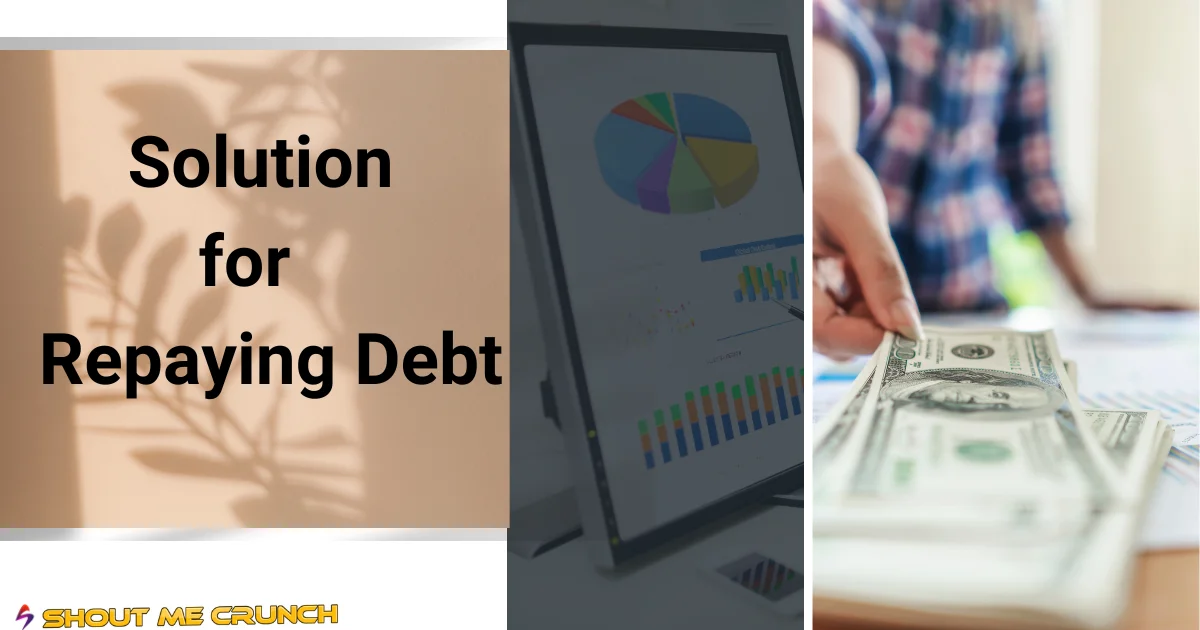The borrower bears the primary obligation to repay the loan. That means they are legally bound to pay the agreed-upon amount with interest. Using these above tactics, you can adequately manage and repay your debt. Lastly, you can achieve financial stability and peace of mind.
Paying off your debt might be stressful. However, with a systematic strategy, it can become manageable and even stress-free. If you are worried about your debt, this article is for you. Here are some unique payback ideas and suggestions to get you started.
Who Is Responsible for a Loan Repayment?
The borrower bears the primary obligation to repay the loan. This means they are legally bound to pay the agreed-upon amount with interest. Before taking the loan, they give a condition. If a cosigner or guarantor is involved, they add extra protection for the lender. If the borrower defaults, the cosigner or guarantor is responsible for the remaining sum.

Defaulting on a loan has severe implications. A borrower must repay the debt within the proper time. It can harm your credit score, making it more challenging to borrow in the future. In addition, lenders may take legal action, such as wage garnishment or asset seizure, to recover their payments. It is critical to understand the repercussions before engaging in any loan deal. You should maintain the deadline for repaying.
Which Method of Debt Reduction Saves You?
The avalanche and snowball are the two most popular debt-reduction strategies. The avalanche technique prioritizes debts with high interest rates. To save yourself, you have to maintain the snowball method of debt. Addressing these costly burdens first will save the most money overall. This technique may seem slow because it focuses on long-term savings rather than rapid results. Enough time is available for debt repaying.
In contrast, the snowball strategy focuses on the smallest debts first. Seeing these diminish soon can be motivating. While the snowball method is less cost-effective in the long term, its psychological lift can help you stay focused. That makes your confidence strong. Ultimately, your financial circumstances and personality determine the most cost-effective technique. The avalanche method is the best option if you want to save money. However, if motivation is essential, the snowball method may be your champion. So, always think smartly to win.
How to Manage and Pay Off Debt?
Conquering debt necessitates a two-pronged approach: controlling your income and carefully paying it off. Everyone wants to repay debt in time. Increasing your income through side hustles or obtaining a raise frees up extra cash to pay down your bills. However, more than simply earning more is required.
Considering your financial condition, you have to repay your debt. Creating a realistic budget identifies wasteful spending and allows you to redirect that money toward debt reduction. Setting defined goals and milestones, such as completing a particular debt by a given date, keeps you motivated and celebrates your progress.

Try to maintain your budget for debt. Do not be frightened to seek help! Financial experts provide tailored advice and free resources such as budgeting applications and instructional publications to help you manage debt successfully. If you face any problems, please get in touch with the lender immediately.
Repay Your Debt Creatively: Proven Solutions
Understand Your Debt
The first step toward efficient repayment is to understand your debt. Create a complete list of all your debts, including amounts, interest rates, and due dates. You can quickly repay your loan with the help of this list. This will allow you to prioritize which debts to address first. Then, you can decide on repayment. High-interest debts should be your main priority because they build quickly. If you require quick funds to pay off debts, try bridging loans. It provides short-term financial assistance until you can acquire more permanent funding. It helps you with debt options.
Creating a Repayment Plan
A well-planned repayment strategy is vital. Begin by estimating your total monthly income. Make a plan for repayment. Then, expenses such as rent, electricity, and groceries should be removed. The remaining funds might be used for debt payments. Now, start saving money. Consider employing the avalanche method (paying off debts with the highest interest rates first) or the snowball method (paying off the smallest debts first to gain momentum). Both techniques have advantages. So, choose the one that best suits your financial and psychological needs. You can understand your repayment plan well.
Budgeting for repayment
Creating a budget that includes your repayment plan will help you stay on track. Take note of this repaying. Identify areas where you can reduce your expenditure, such as dining out, entertainment, or unnecessary purchases. Redirect these monies to your debts. It helps to remember the repaying amount. Budgeting tools can help you track your progress and maintain discipline. Consistently monitoring your budget and changing it as needed can keep your repayment efforts on track with your financial objectives. If your plan matches your budget, you will repay your debt easily.
Increase Your Income
Finding strategies to enhance your income might greatly speed up debt repayment. Consider working a side job, freelancing, or monetizing a pastime. Find an extra income source to repay your debt quickly. Selling unneeded goods around the house might also provide additional income. Try to find unnecessary things and sell them. Even tiny improvements in income can have a significant impact over time. Furthermore, if you obtain bonuses or tax returns, apply a portion of these earnings immediately to your debt to lower the principal faster. You have to need good planning for this budget.
Negotiating With Creditors
Do not be scared to negotiate with your creditors. You have to share your problem with them. Many creditors will deal with you if you are proactive about your condition. Request lower interest rates, decreased monthly payments, or a temporary payment plan. Console with them for proper solution. Some creditors may offer a lump-sum settlement if you can pay a portion of the debt up in advance. Effective communication and demonstrating your commitment to repaying the loan can result in better terms and faster repayment. Creditors will help you if you talk with them politely.

Utilizing Bridging Loans
Bridging loans can be an effective way to manage short-term debt. It is the instant process of loans. These loans provide quick cash to meet urgent financial demands, such as consolidating high-interest debts or covering unexpected bills. For emergencies, a bridging loan is important. A bridging loan allows you to manage pressing bills while swiftly planning for longer-term repayment options. Make sure you have a sound repayment plan in place because bridging loans often have higher interest rates and shorter durations. If you need a loan within a short time, you can use a bridging loan.
Automating payments
Automating your debt payments ensures that you never miss a due date. It allows you to avoid late penalties and interest. Usually, it works like a reminder. Set up automated transfers from your bank account to your creditors each payday. This strategy also allows you to prioritize debt repayment over spending on non-essential products. It helps to fulfill the condition. Automation establishes a structured repayment schedule. It helps to lower the chance of falling behind and boost your credit score over time. You can set this automatic payment system to avoid the payment deadline.
Staying motivated
Repaying debt can be a lengthy process, so keeping motivated is essential. Set small, attainable goals and reward yourself when you meet them. Always try to repay the debt within the deadline. Visualize a debt-free future and remind yourself of the advantages, such as financial freedom and less stress. Support from family and friends can help provide motivation and accountability. You should communicate with a lender for flexibility. Maintaining a positive attitude and celebrating accomplishments enables you to stay dedicated to your repayment goals. Follow the above tips for early repaying.
Conclusion
The borrower bears the primary obligation to repay the loan. That means they are legally bound to pay the agreed-upon amount with interest. Using these above tactics, you can adequately manage and repay your debt. Lastly, you can achieve financial stability and peace of mind.


